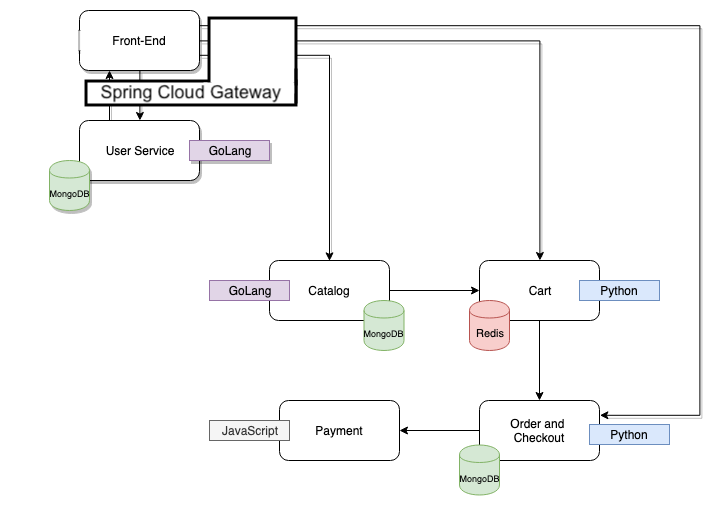These instructions will allow you to run entire ACME Fitness Shop
Based on the type of deployment the requirements will vary
- docker-compose - Needs docker-compose version 1.23.1+
- kubernetes
- AWS Fargate
Other deployment modes coming soon
Install Spring Cloud Gateway for kubernetes before running the following command.
echo 'password=<value>' > kubernetes-manifests/.env.secret
kustomize build kubernetes-manifests/ | kubectl apply -f -
Note: <value> can be any value. It will be the password used by the deployed apps to access the deployed databases.
To visit the site, you may port-forward the gateway service:
kubectl port-forward service/gateway-acme 8080:80
Or add a DNS record to either a DNS registry or in your local /etc/hosts:
<your.ingress.ip.address> gateway-acme.spring.animalrescue.online
If you'd like to use API portal for VMware Tanzu to view all the endpoints, you will need to install API portal with api-portal-server.sourceUrls: "http://scg-operator.spring-cloud-gateway/openapi" set in the helm values. The gateway resource assumes API portal is using the URL http://api-portal.spring.animalrescue.online. To create an Ingress resource for your API portal with this URL, you may run:
kubectl apply -f kubernetes-manifests/api-portal-ingress.yaml # Assuming API portal is installed in `api-portal` namespace.
We deploy to acme-fitness namespace by default (kustomize will create that namespace as well). If you prefer a different namespace, you may change it in kubernetes-manifests/kustomization.yaml.
-
Clone this repository
-
You will notice the following directory structure
├── README.md
├── acmeshop.png
├── aws-fargate
│ ├── README.md
│ ├── acme-fitness-shop.yaml
│ └── cf-template.png
├── docker-compose
│ ├── README.md
│ └── docker-compose.yml
├── kubernetes-manifests
│ ├── README.md
│ ├── gateway.yaml*
│ ├── api-portal-ingress.yaml*
│ ├── cart-redis-total.yaml
│ ├── cart-total.yaml
│ ├── cart-gateway-config.yaml*
│ ├── catalog-db-initdb-configmap.yaml
│ ├── catalog-db-total.yaml
│ ├── catalog-total.yaml
│ ├── catalog-v2-total.yaml
│ ├── catalog-gateway-config.yaml*
│ ├── frontend-total.yaml*
│ ├── frontend-gateway-config.yaml*
│ ├── order-db-total.yaml
│ ├── order-total.yaml
│ ├── order-gateway-config.yaml*
│ ├── payment-total.yaml
│ ├── users-db-initdb-configmap.yaml
│ ├── users-db-total.yaml
│ ├── users-total.yaml*
│ └── users-gateway-config.yaml*
└── traffic-generator
├── README.md
├── locustfile.py
└── requirements.txt
The files marked with * are updated to work with Spring Cloud Gateway and API portal.
- Switch to the appropriate directory for deployment
The traffic-generator is based on locust and can be used to create various traffic patterns, if you need it for other demos associated with Monitoring and Observability.
